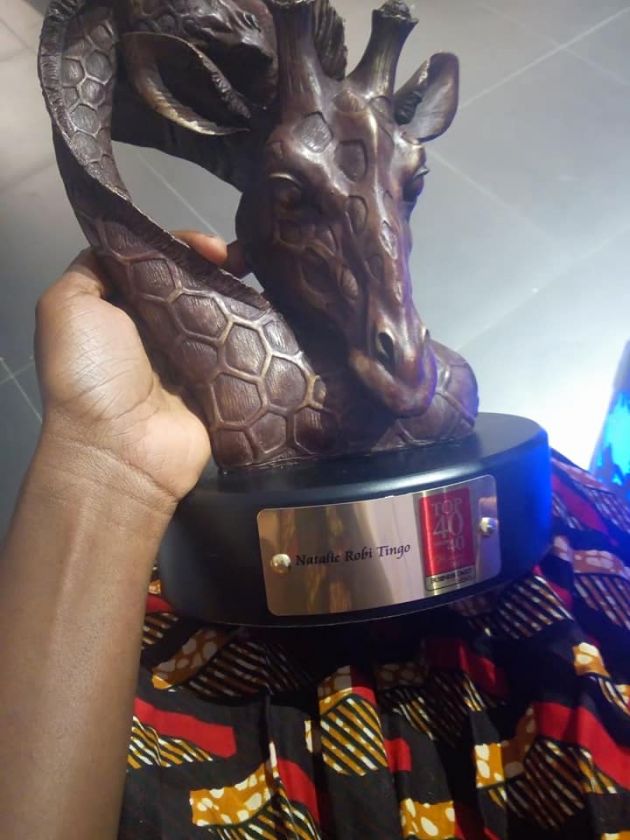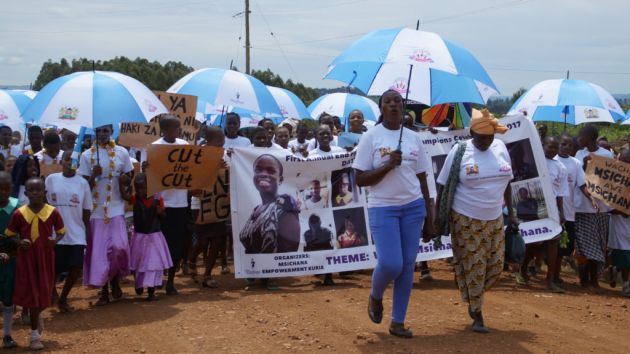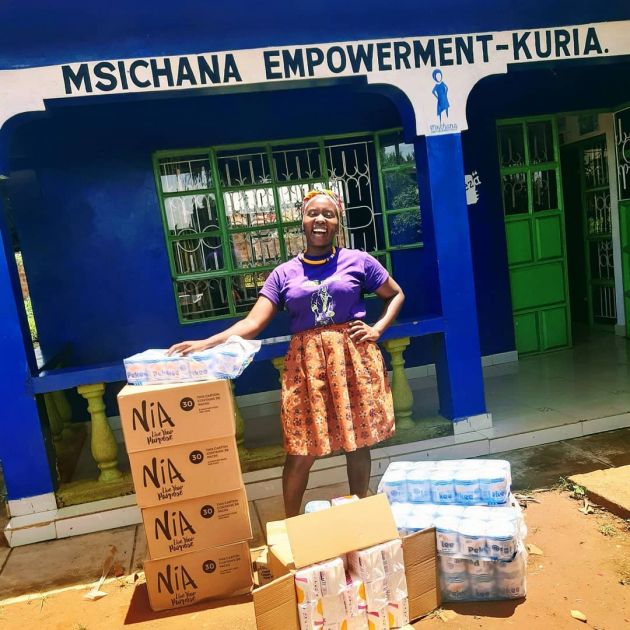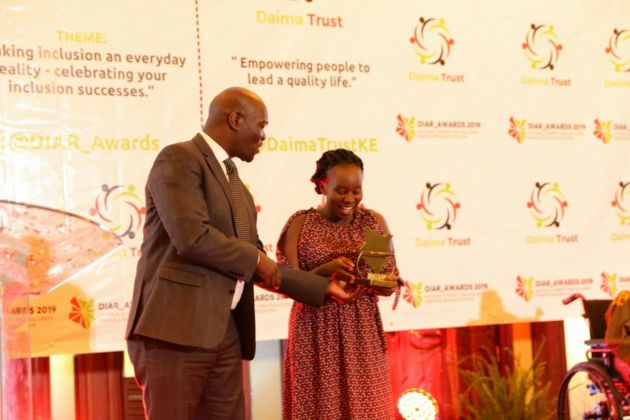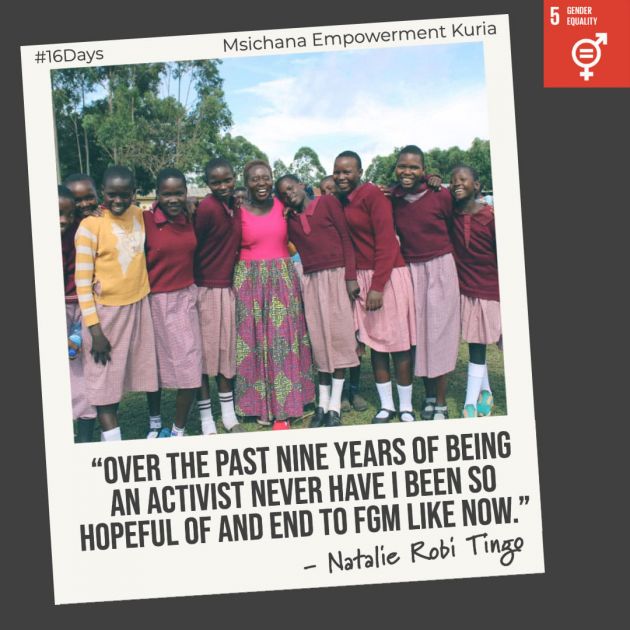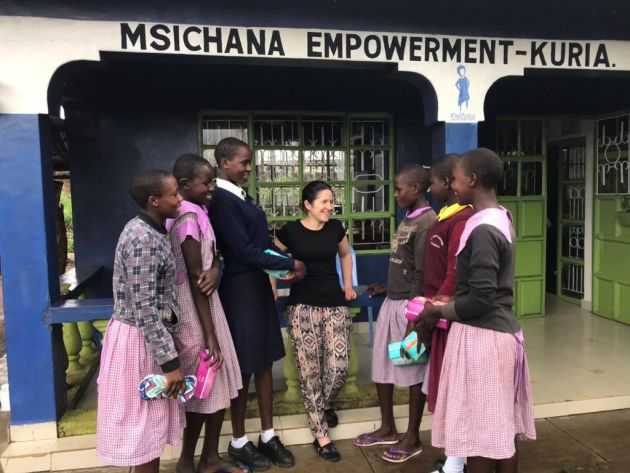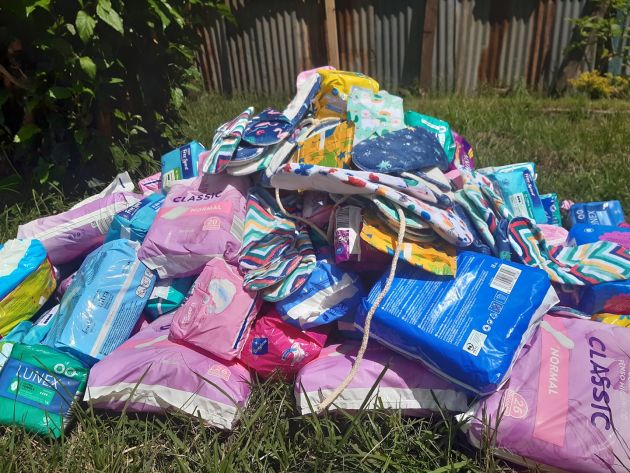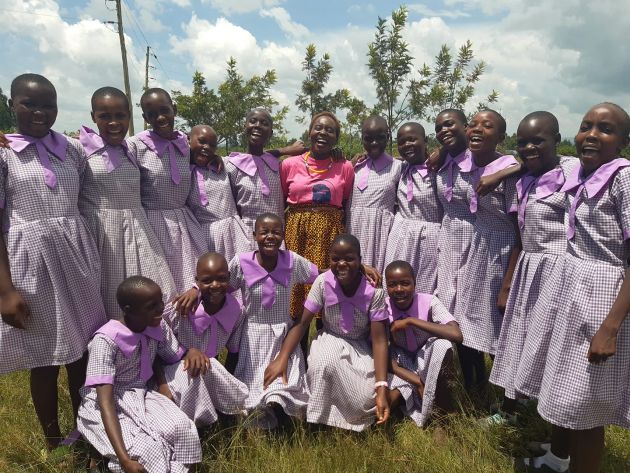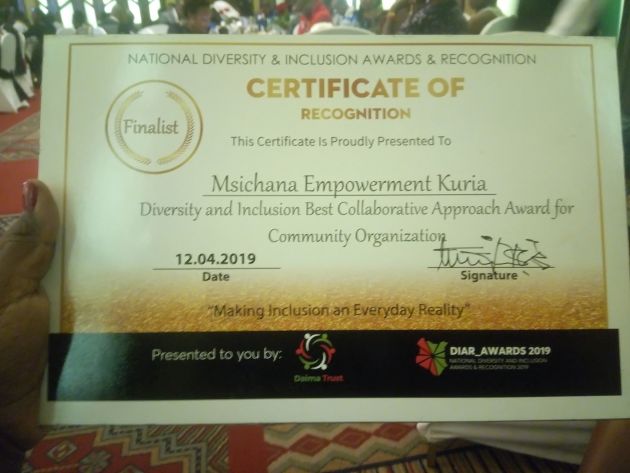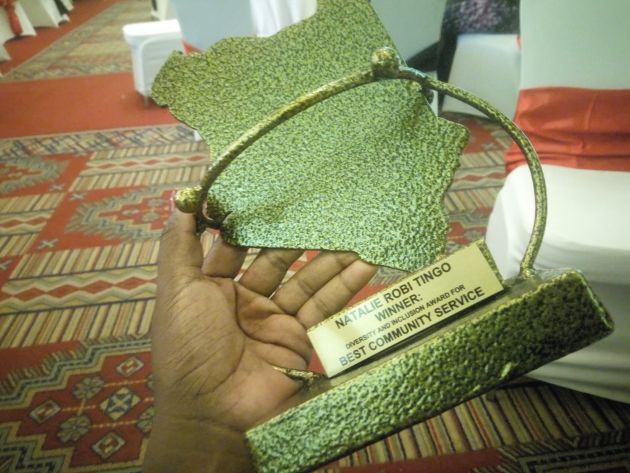HELP RESCUE GIRLS FROM FEMALE GENITAL CUT (FGC), KENYA
Fundraising campaign by
Natalie Robi
-
US$0.00Donated So Far
The campaign owner has stopped the page from accepting further donations. Please contact them if you'd still like to donate
Campaign Story
My name is Natalie Robi Tingo, the Founder and Executive Director of Msichana Empowerment Kenya, a women-led community-based organization in rural Kenya that has since 2018 worked to end female genital mutilation (FGM) by tackling its root causes and empowering women and girls.
The main aim of the organization is to lead in the rescue girls from the mutilation of the female genitalia. The practice is still prevalent in Kenya, especially in my area, Kuria West, and I have always felt the need to help the young girls escape from the dangers associated with the practice. Natalie Robi Tingo
Natalie Robi Tingo
In Swahili language, Msichana means a young girl. So far, the Msichana Empowerment Kenya has rescued more than 250 girls from the deadly act and sponsors them fully in terms of education, upkeep, basic needs, including provision of Sanitary towels and COVID PPEs among other daily life needs.
Since the impact of COVID 19, the operation of the organization has been partially crippled because of the restrictions and measures that are put by the government e.g. socializing, curfews, lockdowns, closure of schools etc. This may lead to the depletion of fundsand the girls have nowhere else to go since some are literally disowned by their families for choosing their future and life over the cut.
This is why we as the organization have decided to launch this campaign to help us cope with the trying times and overcome everything until we realize the dreams of each and every girl that is in our hands. We believe in togetherness and in lending hands to the greater good of the female society.
Please feel free to continue reading this story to get a better picture of the situation at hand (the pictures and documents have been included for reference and for better understanding). Thank you.
What is FGC?
Female genital cutting/Mutilation (FGC/M) is a harmful practice involving the full or partial removal of, or injury to, a girl’s external genitals. On average, globally, girls are cut before the age of 5, although this varies between different communities and can happen at any time from a girl’s birth to her adolescence. It is also called Female Circumcision.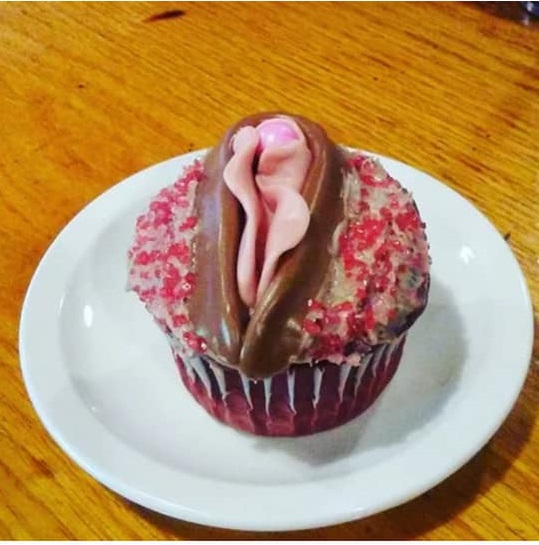
vulva shaped cake: FGM aims at mutilating the victims womanhood. Ph0to; courtesy
FGC is not an obligation of any religion and has no known health benefits. Far from it, the practice can cause long-lasting physical and psychological damage for the more than 200 million women and girls who are affected worldwide. In some cases, this can include death.
FGC in Kenya
In Kenya the national FGC prevalence rate is 21%, which shows a decline in recent years (27.1% in 2013-15, 32.2% in 2013 and 37.6% in 2003). Prevalence varies between regions and ethnic groups, with the regions in which this baseline review took place having significantly higher prevalence of FGC than the national rates. Among the Maasai, which includes Narok and Loita Hills areas with multiple smaller communities within, the prevalence rate for FGC in 2014 was 78%11. In Kuria, southwest Kenya (where I hail from), FGC prevalence was at a staggering 96% by 20015. This is one of the driving factors that led to the start up of Msichana Empowerment in Kenya.
Document on The Profile of FGC in Kenya PDF
How is FGC carried out?
Procedures vary in severity from removal of the clitoral hood to narrowing of the vaginal opening. Female genital mutilation is classified into 4 major types.
- Type 1: this is the partial or total removal of the clitoral glands (the external and visible part of the clitoris, which is a sensitive part of the female genitals), and/or the prepuce/ clitoral hood (the fold of skin surrounding the clitoral glands).
- Type 2: this is the partial or total removal of the clitoral glands and the labia minora (the inner folds of the vulva), with or without removal of the labia majora (the outer folds of skin of the vulva ).
- Type 3: Also known as infibulation, this is the narrowing of the vaginal opening through the creation of a covering seal. The seal is formed by cutting and repositioning the labia minora, or labia majora, sometimes through stitching, with or without removal of the clitoral prepuce/clitoral hood and glands (Type I FGM).
- Type 4: This includes all other harmful procedures to the female genitalia for non-medical purposes, e.g. pricking, piercing, incising, scraping and cauterizing the genital area.

Deinfibulation refers to the practice of cutting open the sealed vaginal opening of a woman who has been infibulated, which is often necessary for improving health and well-being as well as to allow intercourse or to facilitate childbirth.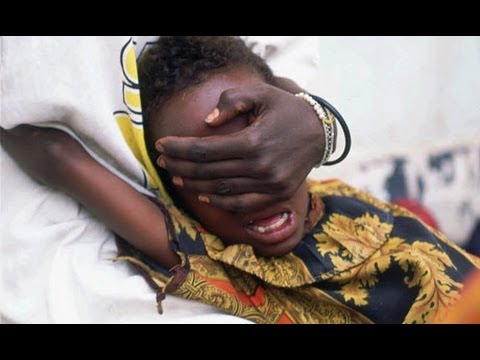
The overall process is very painful as many of the traditional female circumcisers use little or no an aesthesia while carrying out the butchering act. A big number of girls do not even withstand the pain and
more of than not pass out or even die.

young girls undergoing the mutilation; Photo: COURTESY

Most girls undergo through FGM while under 5 years.
Immediate complications can include:
- severe pain
- excessive bleeding (hemorrhage)
- genital tissue swelling
- fever
- infections e.g., tetanus
- urinary problems
- wound healing problems
- injury to surrounding genital tissue
- shock
- Death.
Long-term complications can include:
- urinary problems (painful urination, urinary tract infections);
- vaginal problems (discharge, itching, bacterial vaginosis and other infections);
- Menstrual problems (painful menstruations, difficulty in passing menstrual blood, etc.);
- scar tissue and keloid;
- Sexual problems (pain during intercourse, decreased satisfaction, etc.);
- increased risk of childbirth complications (difficult delivery, excessive bleeding, caesarean section, need to resuscitate the baby, etc.) and newborn deaths;
- need for later surgeries: for example, the sealing or narrowing of the vaginal opening (Type 3) may lead to the practice of cutting open the sealed vagina later to allow for sexual intercourse and childbirth (deinfibulation). Sometimes genital tissue is stitched again several times, including after childbirth, hence the woman goes through repeated opening and closing procedures, further increasing both immediate and long-term risks;
- Psychological problems (depression, anxiety, post-traumatic stress disorder, low self-esteem, etc.);
- READ ON: Female Genital Cut- A baseline review of attitudes and behaviours in Kuria, Narok and Loita Hills-Orchid Project.pdf
What are the tools used?
In the most rural areas of the country where the act is notoriously done, various crude cutting tools are used that include homemade knives, razors, scissors or any sharp object that can cut. The picture below shows some of the most commonly used “tools” and their users in the act. Some of the cutting tools used on young girls.The health and hygiene protocols are not followed and this may lead to infection that may lead to fistula and death.
Some of the cutting tools used on young girls.The health and hygiene protocols are not followed and this may lead to infection that may lead to fistula and death.
Impact of COVID 19 in Kenya on FGC.
From March 2020, early in the global COVID-19 crisis, reports began to emerge from our partners and allies that they were witnessing elevated rates of female genital cutting (FGC). In Kenya, a country making positive progress in ending the practice through political leadership, a national and county-level governance structure and civil society action, we were hearing consistent reports of girls being subjected to FGC, or fleeing their homes for fear of being cut, from various counties due to school closures and the implementation of lockdown measures
Curfews and ‘stay at home’ orders have resulted in the shutting down of schools, safe houses, churches, and other forms of refuges for girls at risk of FGC. Most lockdown orders have been implemented in high-prevalence FGC areas without exemption for girls at risk, reducing access to essential GBV and protection services, and disrupting vital and life-saving referral pathways. Emergency situations resulting in increased sexual violence also place survivors of FGC at greater risk of compounded physical and mental health impacts as a result of existing trauma20 and physical health impacts of FGC.
Girls locked down at home are far more likely to be subjected to FGC, where communities have the opportunity to conduct ceremonies in secret. In Rift Valley, Kenya, it is reported that communities are using male circumcision ceremonies to secretly cut girls during lockdown and most girls were not able to go back to school after the first lockdown that ended on December 2020. Most girls are either married off after this act or may not have healed completely to go back to school. Stigma and low self esteem also has made them not to go back to school.
Read on: The impact of COVID19 on FGM PDF
How has the journey been?
The Msichana Empowerment initiative has had its successes and challenges since its creation in 2015.
We have helped many girls to go back to school, even those who have already being cut. We have also held several training sessions where we educate the girls and the community at large on the dangers and the negative effects of Female Genital Mutilation. we have provided food to them and also basic needs.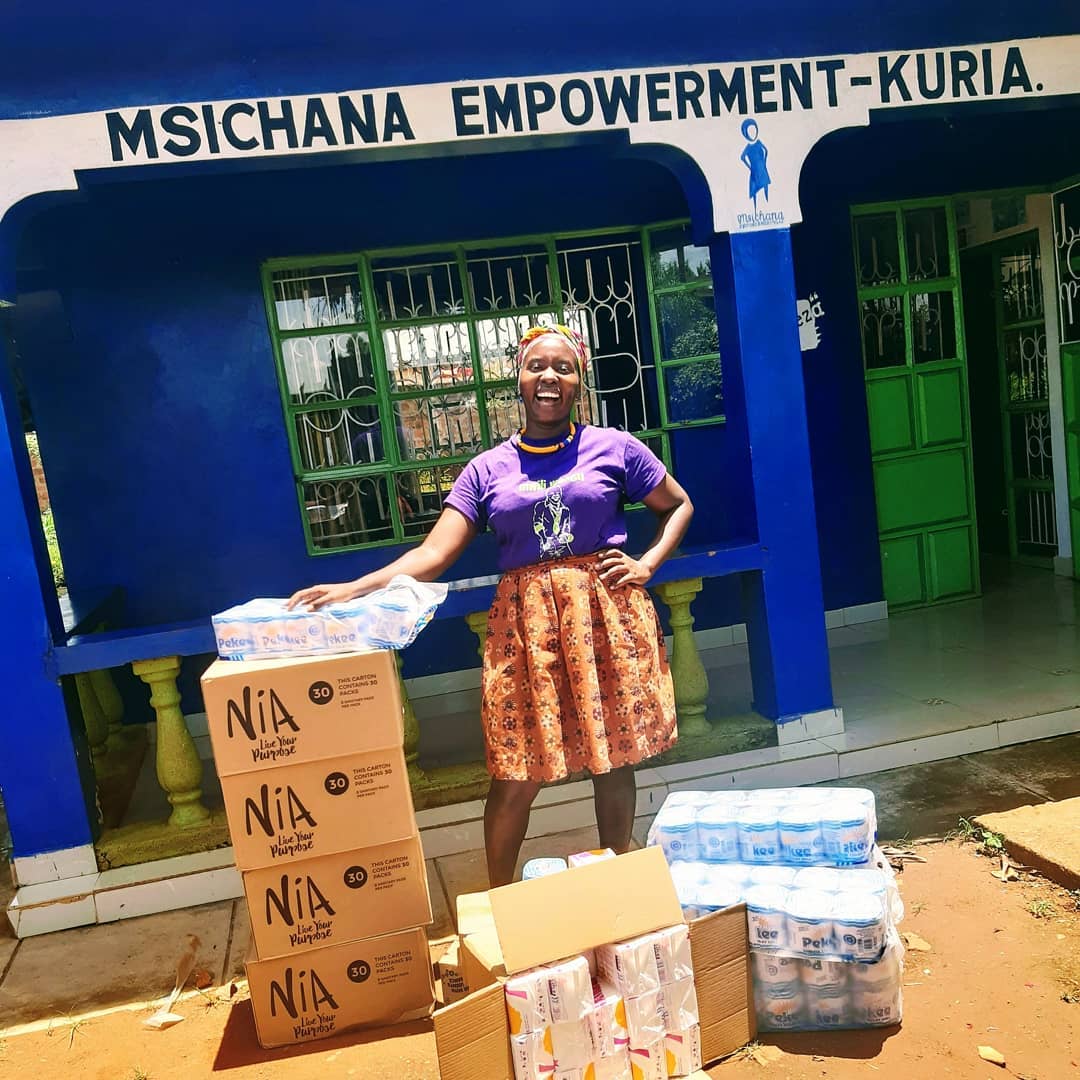 some basic needs brought to the centre for the girls
some basic needs brought to the centre for the girls
We have been recognized by local and international bodies for the good work we have been doing and this has been a good motivator for us to continue with the act as much as we can. Award for good work done
Award for good work done
 Certificate of recognition by NDIARLikewise we have had out downs as an organization because being a generally small organization, the lead is not always welcome, especially by the communities that believe that FGC is beneficial to their girls. Some of our sessions have been rudely disrupted by locals who advocate for FGC. Getting funds also has derailed our proceedings where we could not fully support the ever increasing numbers of girls in need of such help.
Certificate of recognition by NDIARLikewise we have had out downs as an organization because being a generally small organization, the lead is not always welcome, especially by the communities that believe that FGC is beneficial to their girls. Some of our sessions have been rudely disrupted by locals who advocate for FGC. Getting funds also has derailed our proceedings where we could not fully support the ever increasing numbers of girls in need of such help.
Currently we fully sponsor ten girls, but we still extend a hand to those who are not fully sponsored but need help.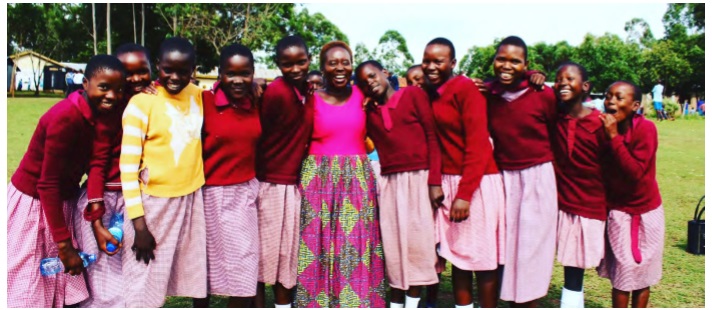
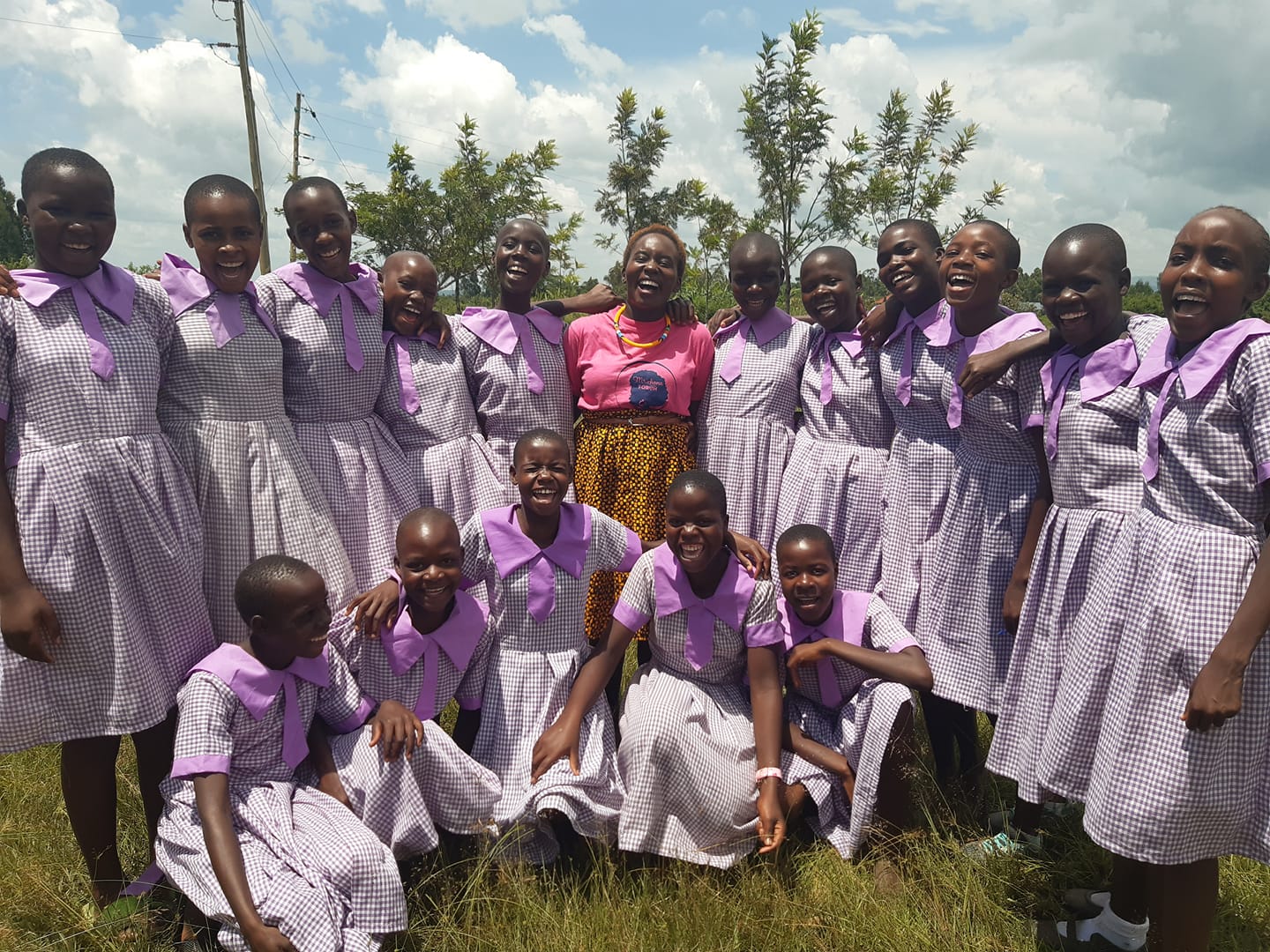
This is why we call on every one to help in the fight against FGC and help the young girls enjoy their education, womanhood, sex, have self-esteem etc.
How much money is needed?
For the purpose of this campaign, the funds are directed to the support of the ten full sponsored girls, half of whom are sitting for their final exams for Kenya Certificate for Secondary Education and 4 sitting for Kenya certificate for Primary Education.
The costs for the tuition fees, upkeep and provision of basic needs is $150 per head totaling to $1,500. (Kenya Shillings 15,000 per head, totaling to Kenya shillings 150,000)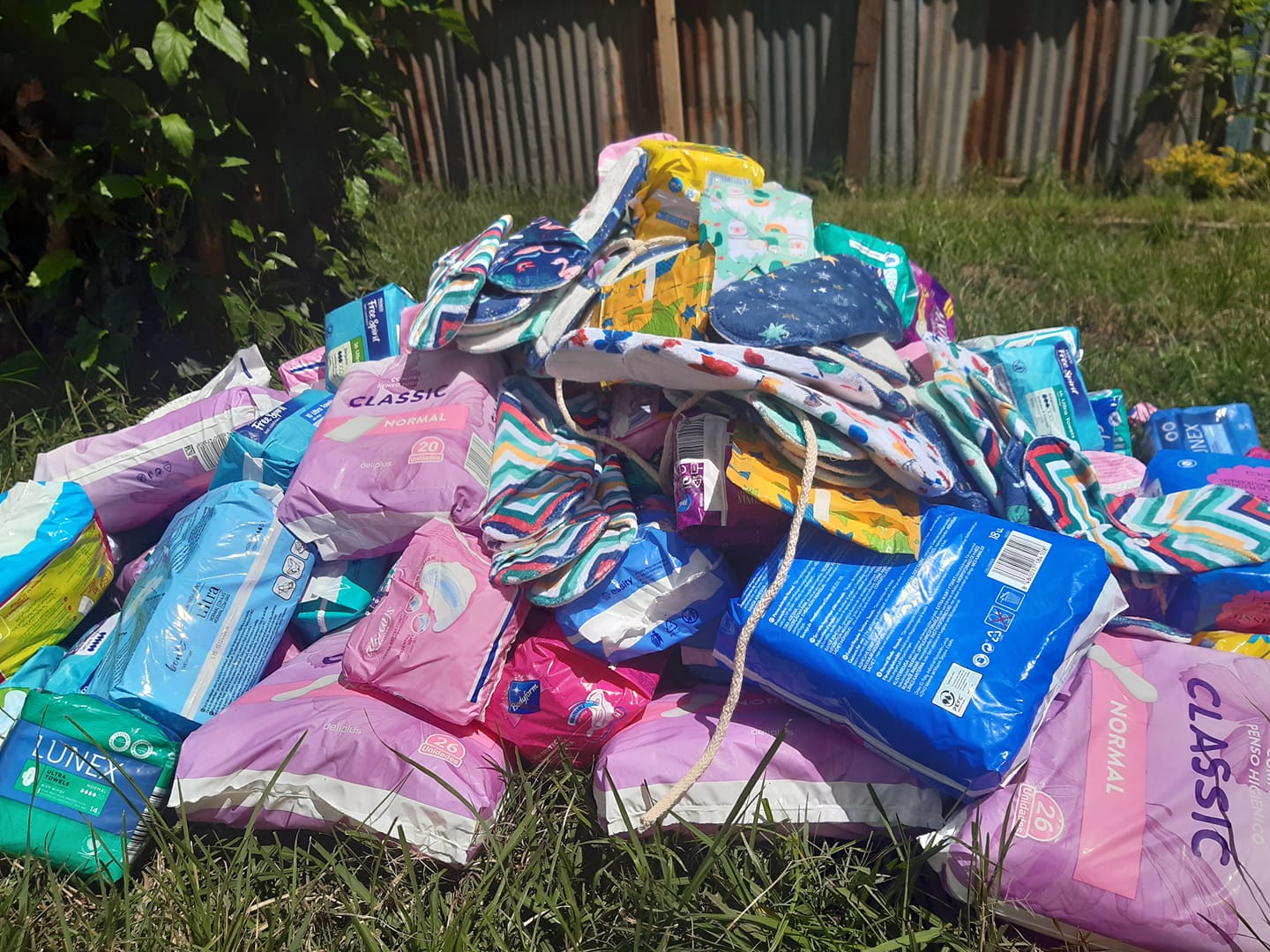
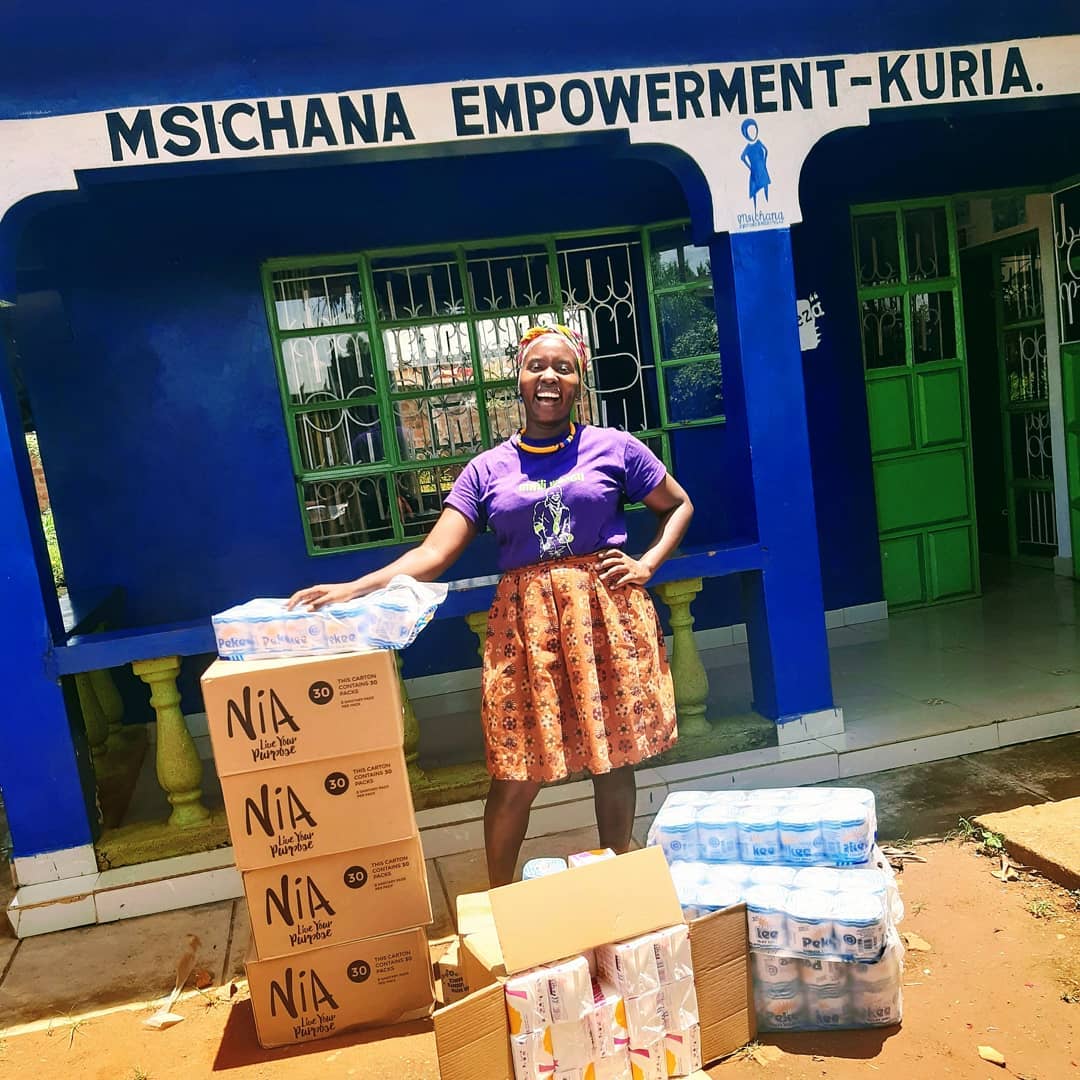
We are very optimistic that we will raise the amount within the next 3 months that will help in securing the future of needy human.
We thank you for your empathy, time and donation towards this cause. May you be blessed abundantly for becoming an ambassador for FGM free world.
Thank you.
Organizer
- Natalie Robi
- Campaign Owner
No updates for this campaign just yet



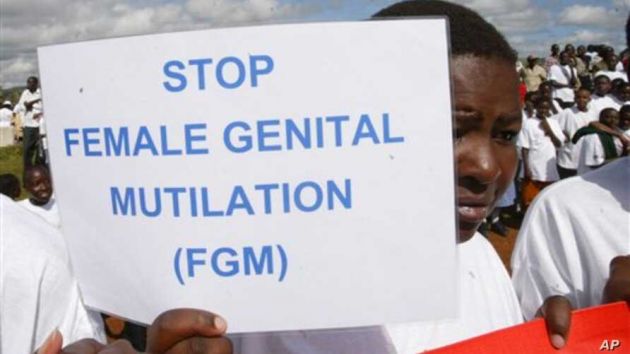
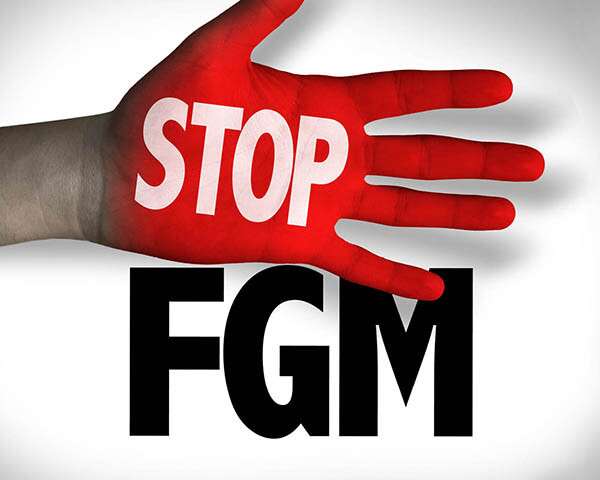
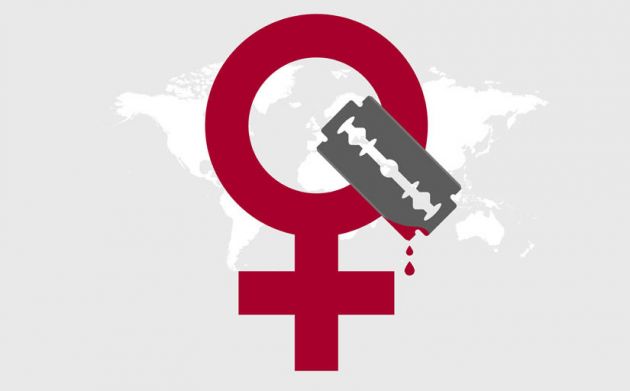
-630x274.jpg)

